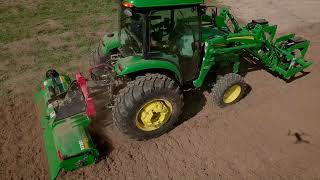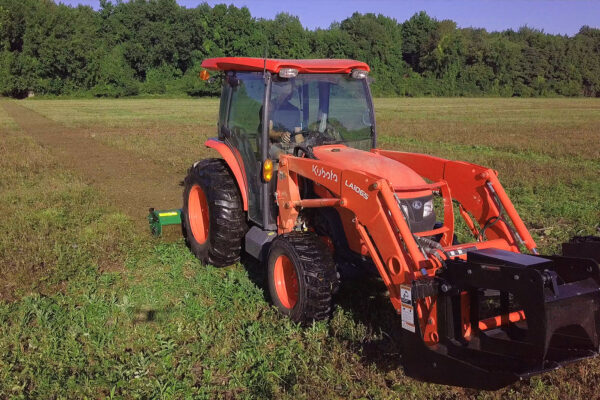Tractors and rototillers go together like two peas in a pod. Having stood the test of time as a proven method to work the ground into a fine soil bed ready to seed, there’s not a tool that will do a better job. However, tillers are great for more than just prepping soil for seed! If you have a rough lawn or looking to do a lawn renovation, then a tiller is an excellent choice to chop up old sod and mix it in with the existing soil. Not only that, but it will greatly help in leveling out bumpy areas for a much more comfortable mow in the future! Driveway installation and renovation is another task that tillers prove their value. Breaking up hard pan, providing loose top soil to scoop out, leaving a hard bottom underneath to run your bucket along. By tilling your topsoil up, you now have a nutrient rich material to use elsewhere instead of a pile of dirt with sod chunks and clods throughout.
WE SELL AND SHIP OUR TILLERS RIGHT TO YOU, CHECK THEM OUT!
How do you pick the right tiller to fit your tractor? You’ll want to check your tractor specs for a few things. First, horsepower always comes into play. Pay attention to the PTO horsepower rating, not the engine HP. PTO HP is what most tiller manufacturers will list within their requirements. Second, measure the outside width of your rear tires. You will want and appreciate a tiller that covers the width of your tractor footprint. Having too narrow a tiller will leave tires tracks and an inconsistent seed bed. Third, double check if your tractor requires category 1 or category 2 three point hitch hook up. Fourth, don’t worry much about the PTO as they will all run off 540 rpm’s which is standard in the compact tractor world.
The last thing you need to decide if you want forward or reverse rotation. This requires a bit more explanation. I’ve only ever used forward rotation tillers. I’ve also never found their results undesirable. I’ve spent a couple hundred hours tilling over the years for customers in many soil conditions. Forward rotation leaves a consistent and ideal soil surface. Reverse rotation will typically cost your more money and I just can’t see how the results could be any better. On that note, there are some manufacturers that have a gearbox to allow forward or reverse rotation by changing the gear setup within the box.
WATCH THE TILLER IN ACTION BY CLICKING ON THE IMAGE BELOW!
One final note on PTO HP as it is more of a guideline and not a rule. Tiller design has improved in the modern era with the flanges that hold the tines being offset from one another. This means that not all tines are making contact with the ground at the same time which lessens the strain on the tractor making it easier to turn. Therefore, I’ve seen many 60″ tillers being ran on tractors with 15-20 PTO horsepower. I’ve used a 60″ tiller on a John Deere 1023e and had no issues. However, it is a little large for the tractor and your soil conditions could lead you to choose a smaller size as well.
We sell rototillers in many sizes to fit your tractor no matter which compact model you own. You’re able to purchase on our website and we ship it right to your house! If you’re interested in learning more about our tillers, then you’ll want to check out this link by CLICKING HERE! You’ll also find our YouTube Channel very helpful as we do product overviews as well as field tests of all the equipment we sell. Hope you found this Tractor Tiller Guide helpful!


